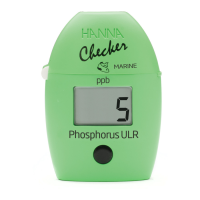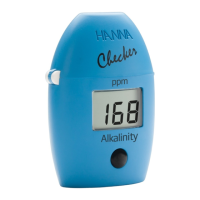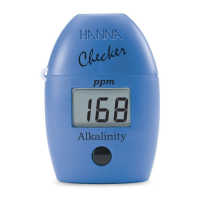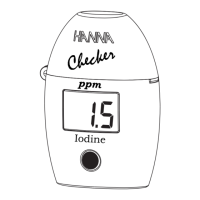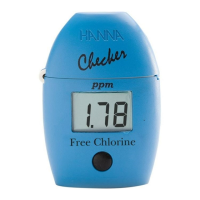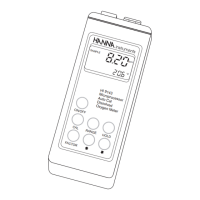60
CALiBrATiON
• The current reading is outside of the acceptable window.
• The current buffer is generating a slope over the of acceptable window.
• Temperature is outside of the acceptable window.
• The current buffer is generating a low slope.
• The current buffer cannot be confirmed due to an inconsistency with the previous
calibration (additionally, clear the old calibration to continue.)
C
Check the buffer value and choose a new buffer if:
• The current buffer has already been accepted or is too close to a buffer that has been
used.
Note: If probe’s response time is slow, clean the probe then repeat the calibration.
11. Tap Confirm Buffer to update the calibration.
Repeat procedure for a total of up to 5 calibration points.
12. Tap Save to update the calibration and return to the calibration setting screen. Tap the Home
key ( ) to return to measurement.
Semiautomatic Calibration
In addition to selecting from 8 standard options, users can define 5 custom buffers to be used for
calibration.
With the Semiautomatic Calibration selected, HI6221 automatically recognizes the closest buffer to
the pH value being measured from all available (standard and custom) buffers.
Users can either confim recognized buffer or change to another available buffer value by tapping the
angle pointing arrow.
Manual Calibration
With this option selected, the HI6221 uses from all available buffer values (standard and custom).
1. Select Calibration tab.
2. Tap to select Manual calibration type.
3. Tap Calibrate on display.
4. Tap the angle forward pointing arrow on display to select correct buffer value.
11.2. RELATIVE mV CALIBRATION
The Rel. mV calibration or ORP calibration allows the user to:
• Perform a single point, custom calibration (Rel. mV).
• Restore the factory calibration (Clear Calibration).
The Oxidation-Reduction Potential (ORP), displayed in mV, is the voltage that results from the
difference in potential between the platinum (or gold) ORP sensor and the silver/silver chloride
reference electrode.
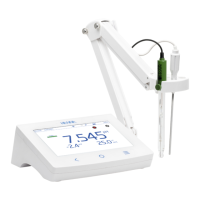
